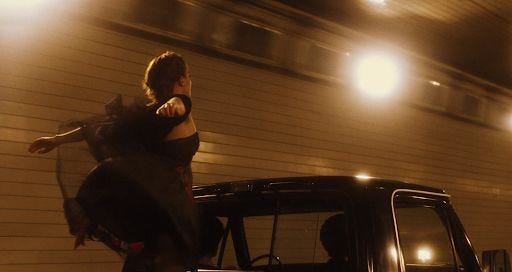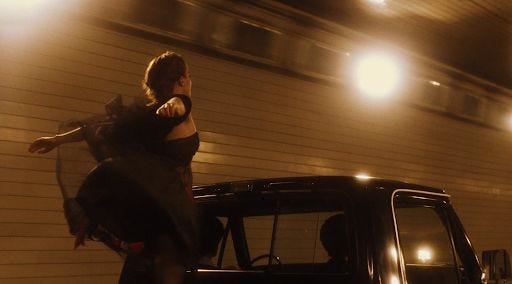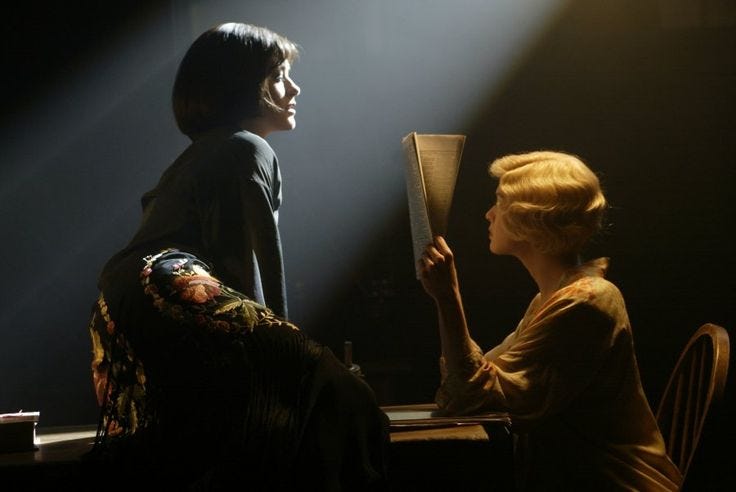Why Your Creative Ideas Die at the Starting Line — and How to Revive Them
There’s no right way to begin but there are infinite wrong ways worth exploring
There’s a particular kind of person who holds an idea close to their chest, something full of promise, beauty and energy. But when it comes time to actually bring it into form, to cross the terrain between inspiration and execution, everything just... freezes. Suddenly, you’re not in the euphoric field of play and experimentation. No, now you’re knee-deep in the logistics of “being serious about your dreams”. Suddenly, the creative impulse gets lost in a fog of questions that feel less like vision-building and more like tax season cosplay. What’s the business model? Do I need a co-founder? Should I trademark it before I even know what it is? Do I need to learn UX? Should I be sharing everything on social media? Why is everyone on LinkedIn talking about scalability like they’re in a tech cult?
We lose the art of making to the checklist of “what professionals do.” But who decided that was the right way? Who came up with the idea that dreams have to be pre-approved by a pitch deck and a ready-made websites before they’re allowed to exist? Just because someone on YouTube with an expensive mic setup said “this is how you get there” doesn’t mean you’re required to follow their exact 8-step self-employment funnel to business guru status.
What if, instead of following a linear roadmap, we began with crossing boundaries with an embodied act of exploration, not execution. What if we allowed ourselves to start with movement, sound, texture, image, rhythm and by borrowing freely from disciplines that aren’t “ours”. What if the beginning wasn’t a checklist, but a wild improvisation where different mediums mix into each other. Not to confuse the process, but to ignite it.
This is an invitation to unlearn the default templates, to step outside the predefined lanes of your discipline, and to let creation become entertainment, hybrid of many visions, turning into something unconventional. To build not from structure, but from sensation. Letting the beginning be an igniter of inspiration, not a set framework.
Productivity Is a Poor God
Perhaps the entire idea of “getting there” is a distraction. We’re so entangled in the hustle culture hallucination that we don’t even notice how deeply we’ve internalized the timelines, aesthetics, and methodologies of others.
We build our visions based on what we see online, feeding off hyper-polished productivity that promises us streamlined methods for bringing our dreams to life. We read posts that say, “Build your project in one week,” or “Here are the five things you need to launch,” as though creativity could be templated and reduced to a handful of to-do items.
To that, I say fuck them all. Not because planning or preparation is evil, but because we’ve let those things occupy the sacred space of beginning. We’ve forgotten how to wander.
When we stop obeying the invisible templates passed down by startup culture, branding experts, and the performance-driven grind, we begin to hear a different kind of voice, the voice of the work itself. And that voice doesn’t speak in spreadsheets or slide decks. It speaks in images, in obsessions, in raw forms.
Refusing to mold yourself to someone else’s process opens a door. In fact, it opens many. The moment you begin inventing your own rhythm, you invite back what’s been missing all along: the sense of play.
And with play comes possibility. You begin to mix mediums that were never meant to be blended. Your work becomes theater, ritual, drag, poetry, film, costume, and choreography. It spills past the lines of traditional formats. It becomes a world of its own, bound together by instinct and experimentation.
How Other Forms Can Form You
When the work begins to feel like play, when it feels light and unpredictable and alive, we free ourselves from the oppressive weight of "serious beginnings." We stop treating our visions like burdens and begin treating them like adventures.
Why not pursue your business idea in a format of a film production? Why not make a choreography as a screenplay, or structure your poem from a perspective of a designer? Why not approach your next writing with the process of a set designer? What if the beginning of something didn’t have to be gray and disciplined, but electric, expansive, and something deeply personal in the mess of it all.
Perhaps you're now wondering: how is this even possible? What tools do I use, what steps do I take, where’s the map to such a process? My mission isn’t to drop a perfect method in your lap, but to open a new perspective. To guide you toward a new way of seeing.
If something here sparks your interest, let that spark lead you. Study the origins of a medium, the reason it was born, how it’s used, and why it persists. Deep dive into tools and disciplines that don’t belong to your world. That strange, hybrid map you build inspired by unfamiliar mediums, will shape your process far more than any checklist.
Because that’s what you’ll live with day after day. That’s what will shape your experience and define your voice. The outcome is only ever a shadow of the process that made it.
Medium-Shifting as Method
And so, I invite you to begin building your vision through unlikely frameworks. Borrow lenses that weren't built for your field at all, and let them transform your approach. Let them shape you. Let them remind you that making can be many things, and that rules are, at best, conditional.
Take this, for instance: what if you built your business the way a movie production comes to life? Imagine breaking your process into scenes rather than steps. Cast collaborators like characters who bring something unique to the unfolding drama. Use storyboarding not just to plan your visuals, but to chart emotional arcs and energy shifts. Let your project have a script, a tone, and a soundtrack. Think of yourself as both director and lead actor, shaping not just the content but the experience of the work. Let the atmosphere be your guide. Create a production bible not just of logistics, but of values, vibes, and aesthetic language.
Or imagine writing like a fine artist paints. Let your ideas arrive slowly, in layers. Allow your words to contain texture, to suggest space and movement. Write with your body, not just your mind. Let silence and deletion become part of the meaning. Make editing feel like sculpting, where each cut reveals something truer. Allow your draft to be unfinished and vulnerable.
Then again, if you’re someone who leans toward structure and function, why not design like a poet? Obsess not just over what your project does, but what it says in tone, in rhythm, in pacing. Make utility beautiful. Let metaphor guide your decisions. A button can be a heartbeat. A landing page can be a doorway to memory. A user journey can be a lyrical arc, full of tension and release. Don’t separate the emotional from the logical; blur the lines until they’re indistinguishable.
Your Process Doesn’t Need Clean Edges
The point is not to choose one of these paths and follow it neatly, but to let them collide, intertwine, feed each other. Let them make a mess in your process. That mess might be the beginning of something entirely new.
Because in the end, this isn’t about rebellion for the sake of rebellion. It’s about reclaiming your right to create in ways that feel alive and expansive, not rigid and extractive. The work doesn’t have to be born in gray. It doesn’t have to come wrapped in structure. It can come in fragments and textures and smells and strange formats you haven’t invented yet.
And maybe the only rule worth following is this: make it yours.







Hey! I saw your post pop up on my homepage and wanted to show some support. If you get a chance, I’d really appreciate a little love on my latest newsletter too always happy to boost each other!
I needed to read this this morning, thank you!